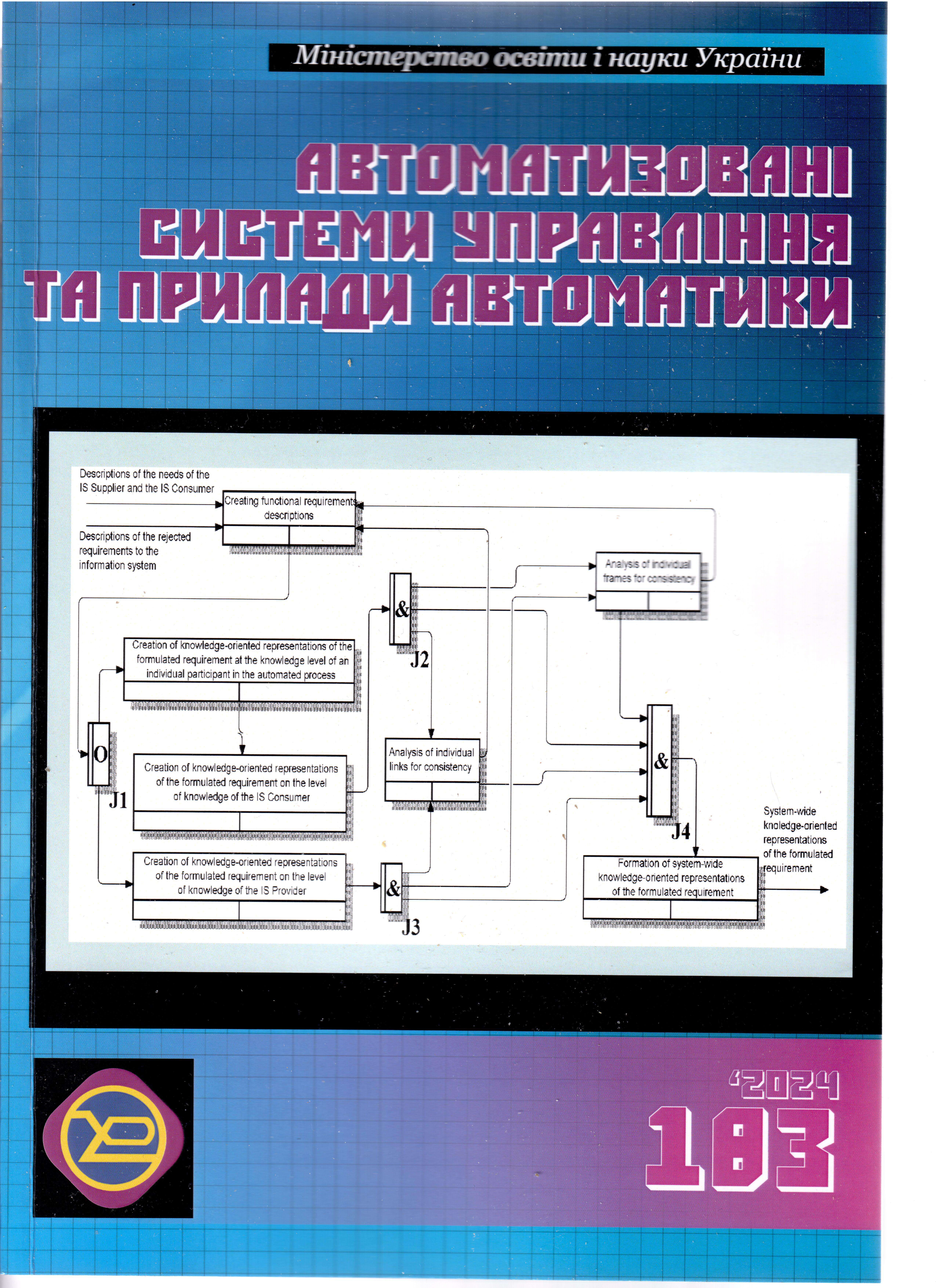Компонентні моделі оцінювання деградації для відновлення авіаційної техніки під час її технічного обслуговування
DOI:
https://doi.org/10.30837/0135-1710.2024.183.014Ключові слова:
деградація, авіаційна техніка, мультиагентне моделювання, компонентний підхід, експлуатація, запасні частини, технічне обслуговування, ремонтАнотація
Розглянуто основні архітектури нейронних мереж, які застосовуються для прогнозування попиту на продукцію. Окрему увагу приділено рекурентним нейронним мережам (RNN), що демонструють високу ефективність у роботі з часовими рядами та виявленні залежностей між даними. Детально проаналізовано архітектуру LSTM (Long Short-Term Memory), яка є вдосконаленим варіантом RNN і дозволяє ефективно вирішувати проблему зникаючих градієнтів, що є характерною для традиційних RNN. Завдяки здатності зберігати інформацію на довші періоди LSTM є ідеальною для задач, які потребують аналізу довготривалих залежностей, таких як сезонні коливання попиту на продукцію.
Проаналізовано застосування згорткових нейронних мереж (CNN), які показують добрі результати при обробці структурованих даних, таких як зображення або матриці. Завдяки своїй здатності ефективно виявляти просторові залежності CNN можуть бути корисними для прогнозування попиту, коли необхідно враховувати складні взаємозв’язки між різними ознаками даних, зокрема для оцінки попиту, що залежить від множинних факторів.
Розглянуто архітектури Feedforward Neural Networks (FNN), Gated Recurrent Units (GRU), Attention-based models (ABM) та Autoencoders (AE), які також можуть бути застосовані для вирішення задач прогнозування попиту. Виконано порівняльний аналіз архітектур з точки зору точності прогнозу та здатності працювати з часовими рядами.
Завдяки порівнянню швидкості навчання, часу обробки даних та надійності різних архітектур, з точки зору стабільності результатів та надійності прогнозів, визначено, що для прогнозування попиту на продукцію найефективнішими є мережі, які використовують архітектуру LSTM. Ці мережі забезпечують високу точність та надійність результатів, а також добре працюють з часовими рядами, що є важливим для прогнозування попиту в умовах динамічних змін.
Посилання
Kála M., Lališ A., Vojtěch T. Analyzing Aircraft Maintenance Findings with Natural Language Processing. Transportation Research Procedia. 2022. Vol. 65. P. 238–245. https://doi.org/10.1016/j.trpro.2022.11.028.
Bisanti G. M., Mainetti L., Montanaro T., Patrono L., Sergi I. Digital twins for aircraft maintenance and operation: A systematic literature review and an IoT-enabled modular architecture. Internet of Things. 2023. Vol. 24. https://doi.org/10.1016/j.iot.2023.100991.
Niu B., Xue B., Zhong H., Qiu H., Zhou T. Short-term aviation maintenance technician scheduling based on dynamic task disassembly mechanism. Information Sciences. 2023. Vol. 629. P. 816–835. https://doi.org/10.1016/j.ins.2023.01.137.
Fedorovich, O., Lutai, L., Trishch, R., Zabolotnyi, О., Khomiak, E., Nikitin, A. Models for Reducing the Duration and Cost of the Aviation Equipment Diagnostics Process Using the Decomposition of the Component Architecture of a Complex Product. In: Faure, E., et al. Information Technology for Education, Science, and Technics. ITEST 2024. Lecture Notes on Data Engineering and Communications Technologies, Springer, Cham. 2024. Vol. 221. https://doi.org/10.1007/978-3-031-71801-4_9.
Yuekuan, Z. AI-driven battery ageing prediction with distributed renewable community and E-mobility energy sharing. Renewable Energy. 2024. Vol. 225. https://doi.org/10.1016/j.renene.2024.120280.
Mukhopadhyay, K., Liu, B., Bedford, T., Finkelstein, M. Remaining lifetime of degrading systems continuously monitored by degrading sensors. Reliability Engineering & System Safety. 2023. Vol. 231. https://doi.org/10.1016/j.ress.2022.109022.
Qiushi, W., Zhenpo, W., Peng, L., Lei, Z., Dirk, U. S., Weihan, L. Large-scale field data-based battery aging prediction driven by statistical features and machine learning. Cell Reports Physical Science. 2023. Vol. 4, iss. 12. https://doi.org/10.1016/j.xcrp.2023.101720.1.
Mudabbiruddin, M., Pokorádi, L. Markovian Model of Ageing Processes – Core Model. IEEE 16th International Symposium on Applied Computational Intelligence and Informatics (SACI). 2022. P. 73–76. https://doi.org/10.1109/SACI55618.2022.9919534.
Vijay, G., Pardeep G. Behavioral Analysis of Two Unit System with Preventive Maintenance and Degradation in One Unit after Complete Failure Using RPGT. International Journal of Computer & Mathematical Sciences. 2015. Vol. 4. P. 190–197.
Milazzo, M.F., Bragatto, P. A framework addressing a safe ageing management in complex industrial sites: The Italian experience in «Seveso» establishments. Journal of Loss Prevention in the Process Industries. 2019. https://doi.org/10.1016/j.jlp.2019.01.005.
Maik, W. Jornitz, A. Review of the Aging Process and Facilities Topic. PDA journal of pharmaceutical science and technology. 2015. Vol. 69, no. 4. P. 553–556. https://doi.org/10.5731/pdajpst.2015.01061.
Huynh, K.T. An adaptive predictive maintenance model for repairable deteriorating systems using inverse Gaussian degradation process. Reliability Engineering & System Safety. 2021. Vol. 213. https://doi.org/10.1016/j.ress.2021.107695.
Wang, X., Gaudoin, O., Laurent, D., Berenguer, C., Xie, M. Modeling multivariate degradation processes with time-variant covariates and imperfect maintenance effects. Applied Stochastic Models in Business and Industry. 2021. Vol. 37, iss. 3, P. 592–611. https://doi.org/10.1002/asmb.2600.
Corset, F., Fouladirad, M., Paroissin, C. Imperfect and worse than old maintenances for a gamma degradation process. Applied Stochastic Models in Business and Industry. 2024. Vol. 40, iss. 3, P. 620–639. https://doi.org/10.1002/asmb.2849.
Montes, T., Batet, F. P., Igualada, L., Eichman, J. Degradation-conscious charge management: Comparison of different techniques to include battery degradation in Electric Vehicle Charging Optimization. Journal of Energy Storage. 2024, Vol. 88. https://doi.org/10.1016/j.est.2024.111560.
Zhang, T., Zhang, T., He, Y., Wang Y., Bi, Y. Corrosion and aging of organic aviation coatings: A review. Chinese Journal of Aeronautics. 2023. Vol. 36, iss. 4. P. 1–35. https://doi.org/10.1016/j.cja.2022.12.003.
Zhu, Y., Xia, T., Chen, Z., Zheng, M., Pan, E., Xi, L. Joint optimization of price, warranty and service investment for capital-intensive equipment considering maintenance capacity limits. Computers & Industrial Engineering. 2022. Vol. 169. https://doi.org/10.1016/j.cie.2022.108152.
Shizhe Peng,Wei Jiang, Wenpo Huang, Qinglin Luo. The impact of gamma usage processes on preventive maintenance policies under two-dimensional warranty. Reliability Engineering & System Safety. 2024. Vol. 242. https://doi.org/10.1016/j.ress.2023.109743.
A. Regattieri, A. Giazzi, M. Gamberi, R. Gamberini. An innovative method to optimize the maintenance policies in an aircraft: General framework and case study. Journal of Air Transport Management. Volumes 44–45, 2015, Pages 8-20. https://doi.org/10.1016/j.jairtraman.2015.02.001.
Jamali, N., Feylizadeh, M. R., Liu, P. Prioritization of aircraft maintenance unit strategies using fuzzy Analytic Network Process: A case study. Journal of Air Transport Management, 2021. Vol. 93. https://doi.org/10.1016/j.jairtraman.2021.102057.
Bugaj, M., Urminský, T., Rostáš, J., Pecho, P. Aircraft maintenance reserves – new approach to optimization. Transportation Research Procedia. 2019. Vol. 43. P. 31–40. https://doi.org/10.1016/j.trpro.2019.12.016.
Zhang, Z., He, S., He, Z., Wang, D., Dong, F. A systematic warranty-reliability-price decision model for two-dimensional warranted products with heterogeneous usage rates. Computers & Industrial Engineering. 2022. Vol. 163. https://doi.org/10.1016/j.cie.2021.107820.
Liu, P.,Wang, G. Generalized non-renewing replacement warranty policy and an age-based post-warranty maintenance strategy. European Journal of Operational Research, 2023. Vol. 311, iss. 2. P. 567–580. https://doi.org/10.1016/j.ejor.2023.05.021.
Karar, A. N., Labib, A., Jones, D. Post-warranty maintenance strategy selection using shape packages process. International Journal of Production Economics. 2023. Vol. 255. https://doi.org/10.1016/j.ijpe.2022.108702.
Hrúz M., Pecho P., Mariášová T., Bugaj M. Innovative changes in maintenance strategies of ATO’s aircraft based on their operational status. Transportation Research Procedia. 2020. Vol. 51 P. 261–270. https://doi.org/10.1016/j.trpro.2020.11.029.
Cakmak, E., Guney, E. Spare parts inventory classification using Neutrosophic Fuzzy EDAS method in the aviation industry. Expert Systems with Applications. 2023. Vol. 224. https://doi.org/10.1016/j.eswa.2023.120008.
Al-Momani, H., Al Meanazel, O. T., Kwaldeh, E., Alaween, A., Khasaleh, A., Qamar, A. The efficiency of using a tailored inventory management system in the military aviation industry. Heliyon. 2020. Vol. 6, iss. 7. https://doi.org/10.1016/j.heliyon.2020.e04424.
Fedorovich, O., Lutai, L., Kompanets, V., Bahaiev, I. The Creation of an Optimisation Component-Oriented Model for the Formation of the Architecture of Science-Based Products. Integrated Computer Technologies in Mechanical Engineering - 2023. ICTM 2023. Lecture Notes in Networks and Systems, Springer, Cham, 2024. Vol. 996. P. 415–426. https://doi.org/10.1007/978-3-031-60549-9_31.

 UA
UA  EN
EN 







